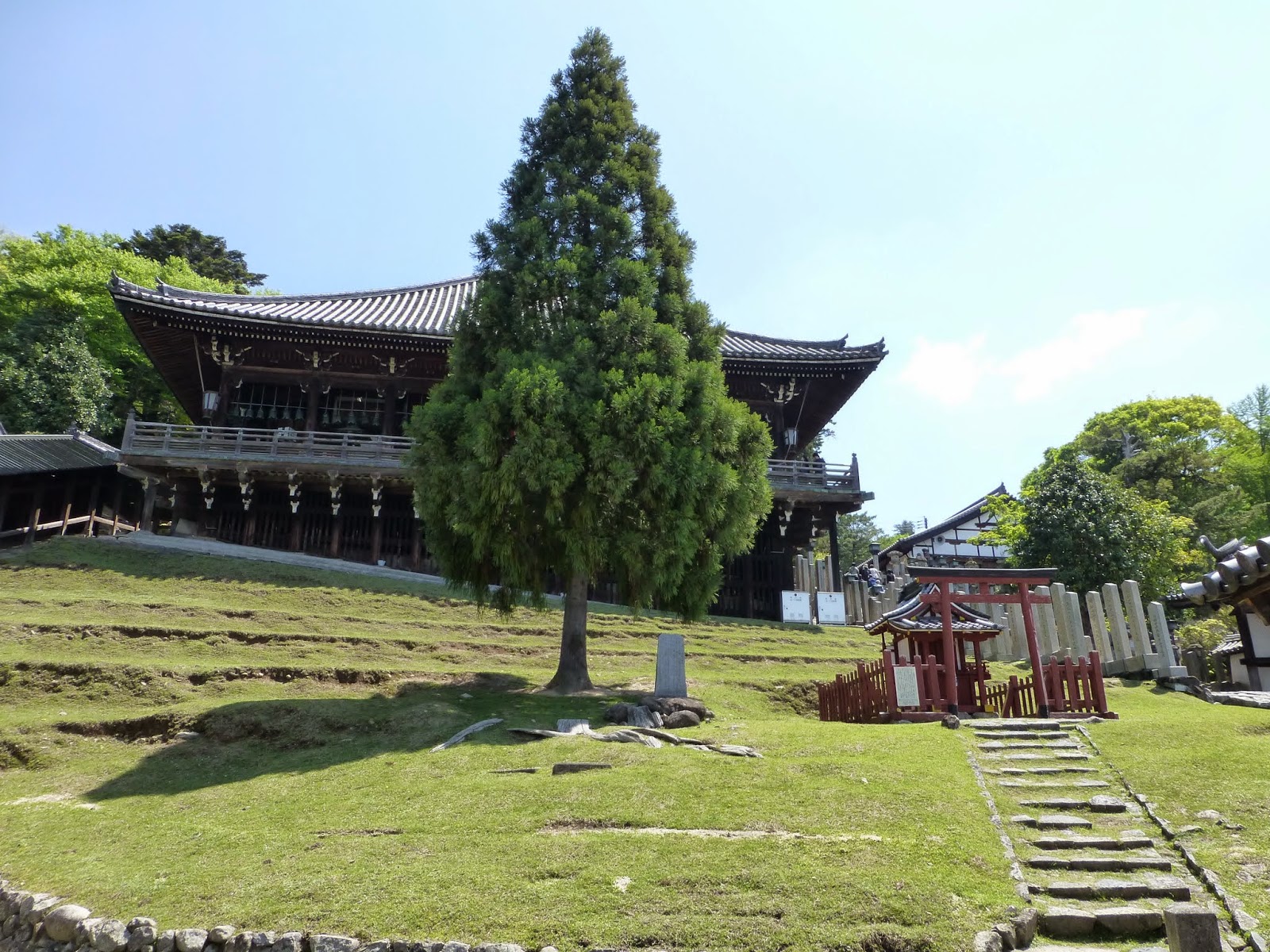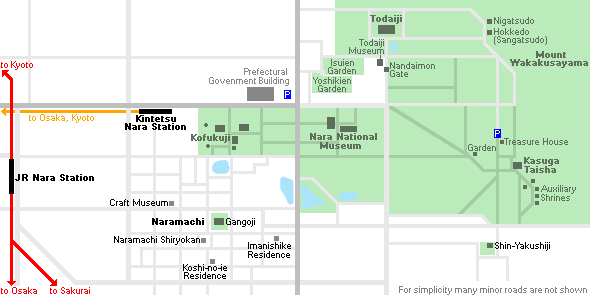Established in 768 A.D. as the shrine of the Fujiwara family, Kasuga has been rebuilt several times.
The shrine is one of the most important in Japan, and it and the surrounding primeval forest are registered as part of a UNESCO World Heritage Site that includes Todai-ji, which I talked about yesterday.
There are over a dozen auxiliary shrines in the forest around the temple, most of which are on the path after the main shrine complex and are a tour of the twelve lucky gods. But coming from Todai-ji, I first have to visit Hokkedo and Nigatsudo, on Todai-ji's grounds.
These two buildings are a nice intermediary and have some beautiful views of their own.
From the balcony of Nigatsudo Hall, you can get a nice view of Nara City.
Let's head into the forest towards Kasuga.
I see stone lanterns. I must be approaching Kasuga Taisha now.
The deer found in Nara Park and the woods around the temple are considered sacred messengers of the gods. Hungry, sacred messengers of the gods.
Kasuga Taisha is known for two things: its architectural style (sorry, I don't have any pictures of the inner sanctuary) and the lanterns. There are lots of lanterns. Over 3000, actually. In the photos above you can see some of the stone lanterns on the paths approaching the shrine, while bronze lanterns hang from the shrine buildings.
The sacred forest is closed to people, in the mountain behind the shrine. But there are woods around the shrine which give you a feel for how nice it is for the gods that live, work, and play in the area.
Note that some of the pictures above, especially early in the page, are of Nigatsudo and Hokkedo, which are actually part of Todai-ji. Due to Golden Week crowds, I was unable to get into several of the most popular sites in Nara and Kyoto, including Kasuga Taisha's inner area. I'd like to return and revisit Todaiji and Kasuga Taisha some day.
Opening by 6:30 AM, Kasuga-Taisha usually closes around 5:30 or 6 PM. Admission to the inner area is 500 yen. There's a botanical garden (9:00-17:00, closed Mondays in winter, 500 yen) and a treasure house (9:00-17:00, 400 yen).
Japan Guide's map above (click the map to go to their website) helps to show the Nara area layout. Kasuga Taisha is the easternmost stop on a tour around Nara Park, possibly after stopping at Kofukuji, Nara National Museum, and Todaiji. Note that the walk from Nara Station to Kasuga Taisha takes about half an hour.



























No comments:
Post a Comment